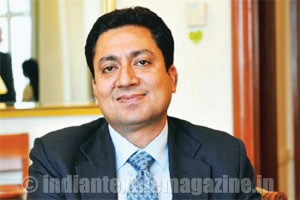Siemens Financial Services, a subsidiary of Siemens AG offering financing services, recently conducted a study among the global top 20 industrial equipment manufacturers. The result findings revealed that India has approximately 17.9 per cent of untapped electricity-efficiency potential, and optimizing industrial motor-driven systems could deliver overall savings of up to 60 per cent in industrial electricity consumption, providing a huge opportunity for cost savings.

The study further provides an estimate of the unused potential for electricity-efficiency (usage and cost-savings, expressed as a proportion of total electricity consumption) in the manufacturing sector, putting India in the second position, following Russia and ahead of China in electricity-efficiency potential.
The report also states that in order to remain competitive in the future, the manufacturing sector must continually innovate and reinvent itself. In particular, electricity consumption and prices have risen substantially over the last decade. Electricity usage in the manufacturing sector has grown markedly over the last 40 years, rising three times faster than the overall energy use, and now represents over a quarter of industrial energy consumption.
Mr. Sunil Kapoor, Chief Executive Officer, Siemens Financial Services Pvt. Ltd., said: “Investing in electricity-efficiency technologies not only helps cut energy bills, manufacturing costs and carbon emissions. New equipment often brings productivity and capacity improvements as an added bonus, improving business performance and competitiveness. The global manufacturing sector is inevitably electrifying, resulting in electricity becoming a pathway to a sustainable energy system and allowing greater levels of automation and digitalization in the manufacturing process.”
Access to finance to fund investments in energy-efficient equipment remains relatively restricted in many countries, especially in India where the base for smaller and medium-sized manufacturing operations is pretty big. “Such tailored financing arrangements will prove fundamental to the Indian manufacturing sector in terms of energy efficiency and thus will boost the Government’s ‘Make in India’ initiative,” added Mr. Kapoor.
The global manufacturing sector is now estimated to account for 42 per cent of total annual electricity consumption. The sector has therefore become keenly focused on installing more electricity-efficient equipment to reduce the consumption and cost of electricity. As a result, an increasing range of electricity-efficient solutions are now available to manufacturers that help reduce electricity consumption and transmission losses, improve business performance, cut lifecycle costs and meet environmental regulations.
Specialist financiers, who understand in great detail the payback that can be obtained from electricity-efficiency technologies, are stepping in to provide financing that can help the country in energy savings, thus offsetting the cost of acquiring energy-efficient equipment.
The independent research was conducted amongst the global top 20 industrial equipment manufacturers between late 2014 and early 2015. Respondent organizations were asked to estimate the base-level potential for electricity efficiency in the examined geographies – China, France, Germany, India, Poland, Russia, Scandinavia, Spain, the UK, the US and Turkey – based on today’s available electricity-efficient technology. An average of respondents’ estimates was then calculated for each country studied.